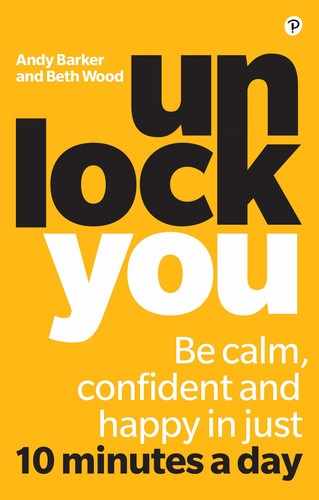Introduction
1 Dietrich, A. (2004) The cognitive neuroscience of creativity. Available at: https://www.ncbi.nlm.nih.gov/pubmed/15875970.
2 Costandi, M. (2016) Neuroplasticity.
3 LONI (Laboratory of Neuro Imaging) then attached to UCLA, now to University of Southern California, has estimated 60,000–70,000; School of Medicine (2011) estimated 60,000–80,000; National Science Foundation (2005) estimated 12,000–60,000.
4 Egan, M. F. (2007) Chemical Reactions. National Institute of Health. Available at: https://www.ncbi.nlm.nih.gov/books/NBK20369/.
5 Harvard Medical School (Sara Lazar, 2005 and 2010); Leiden University, Netherlands (Lorenza Colzato, 2012); University of Texas, Austin (Kristin Neff and Christopher Germer, 2012); University of Massachusetts (Dr Britta Holzel and James Carmody, 2011).
Chapter 1
1 Frankl, V. (1946) Man’s Search for Meaning.
Chapter 2
1 100 billion neurons in Herculano-Houzel, S. (2009) ‘The human brain in numbers’: A linearly scaled-up primate brain. Available at: https://www.ncbi.nlm.nih.gov/pmc/articles/PMC2776484/
2 Albert Ellis, Founder of REBT.
3 Anokhin, P. K. Biology and Neurophysiology of the Conditioned Reflex and Its Role in Adaptive Behavior. Pavlov, I. (1890) Classical Conditioning.
4 Durham Veterans Affairs Medical Centre (Rajendra A. Morey, 2012).
5 R. A. Bressan (2005), University of Sao Paulo.
6 Kurzwell, R. (2012) How to Create a Mind.
Chapter 3
1 Garland, E. (2009) Neuroplasticity, Psychosocial Genomics, and the Biopsychosocial Paradigm in the 21st Century. Florida: Florida State University.
2 Eriksson, P. S. (1998) Neurogenesis in the adult human hippocampus.
3 Albert Ellis, Founder of REBT.
4 UTSW Medical Centre, Dr Thomas Sudhof (Nobel Prize Winner).
5 Kar, N. ‘CBT for the treatment of PTSD: A review’. Available at: https://www.ncbi.nlm.nih.gov/pmc/articles/PMC3083990/.
6 Carla Shatz, Stanford University (2013).
Chapter 4
1 Albert Ellis, founder of REBT.
Chapter 7
Chapter 8
1 René Descartes, seventeenth-century French philosopher.
2 Jarrett, C. ‘Great myths of the brain.’ Available at: http://www.bbc.com/future/story/20141118-how-many-senses-do-you-have.
3 Dr Gershon, M. (1998) The Second Brain.
4 Prof. Ted Kaptchuk, Harvard-affiliated Beth Israel Deaconess Medical Centre (2014).
5 G. D. Jacobs (2004).
6 Amaro, A. Holistic Living - Dharma Talks.
7 Cuddy, A. J.C. and Carney, D. R. (2012) The Benefit of Power Posing Before a High-Stakes Social Evaluation. Harvard Business School.
Chapter 9
Chapter 10
1 Janos Hugo Bruno ‘Hans’ Selye, pioneering endocrinologist and founder of International Institute of Stress.
2 Newth, D. Insights for Managers.
3 Prof. Stephen Palmer (Director of the Centre for Stress Management), Co-author with Cary Cooper of How to Deal with Stress (2007).
4 Borstein, S. (1996) Don’t Just Do Something, Sit There.
5 Sarah Warber, University of Michigan.
